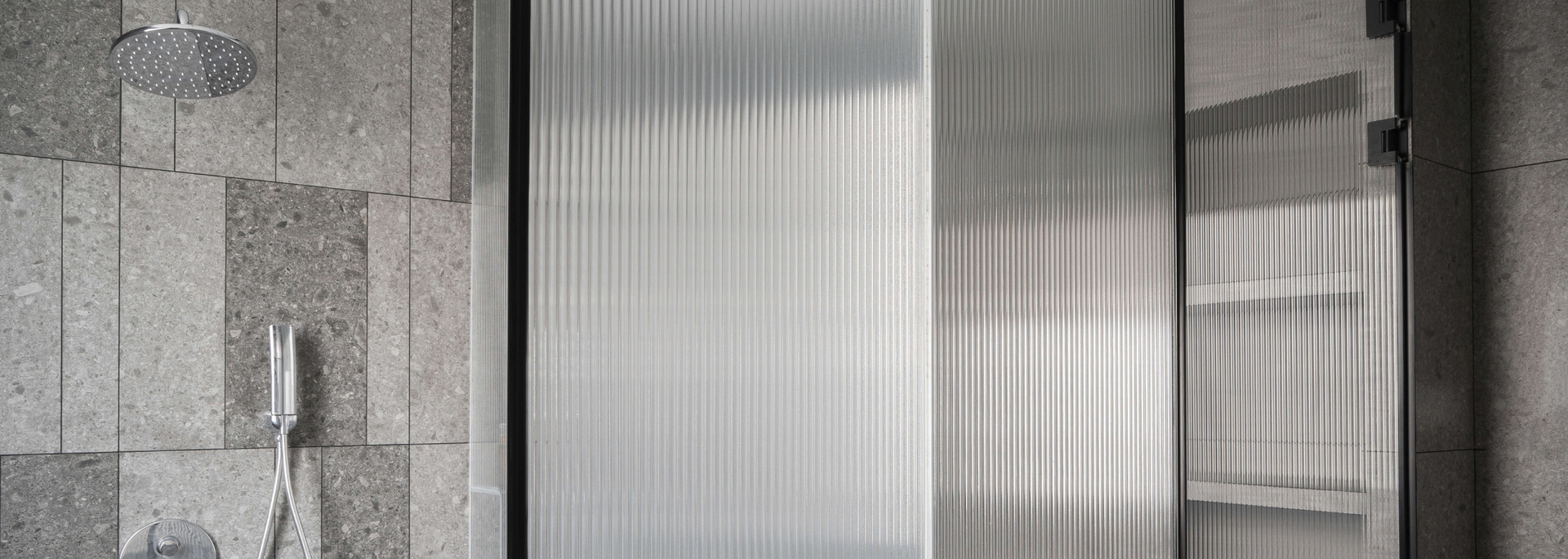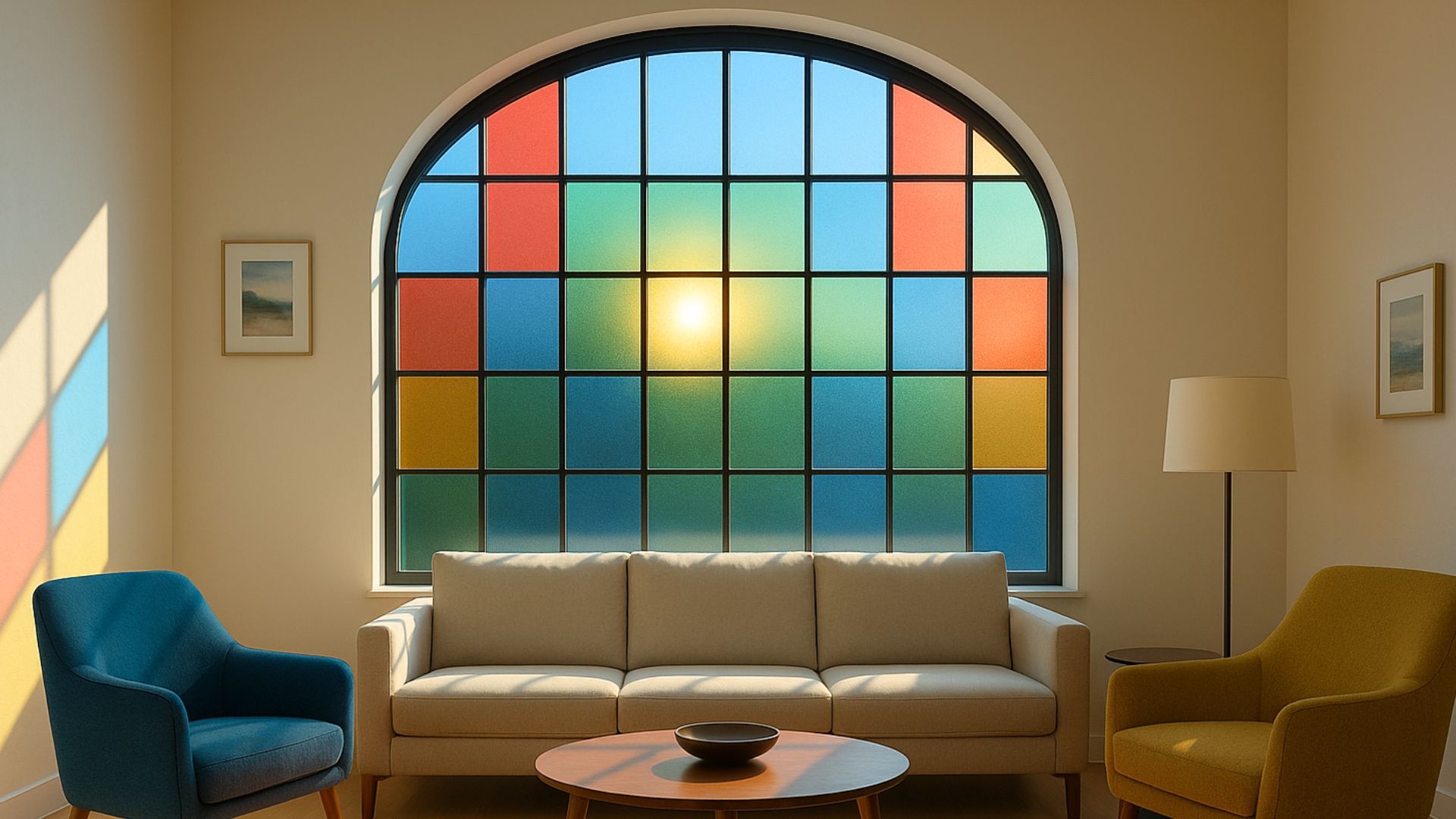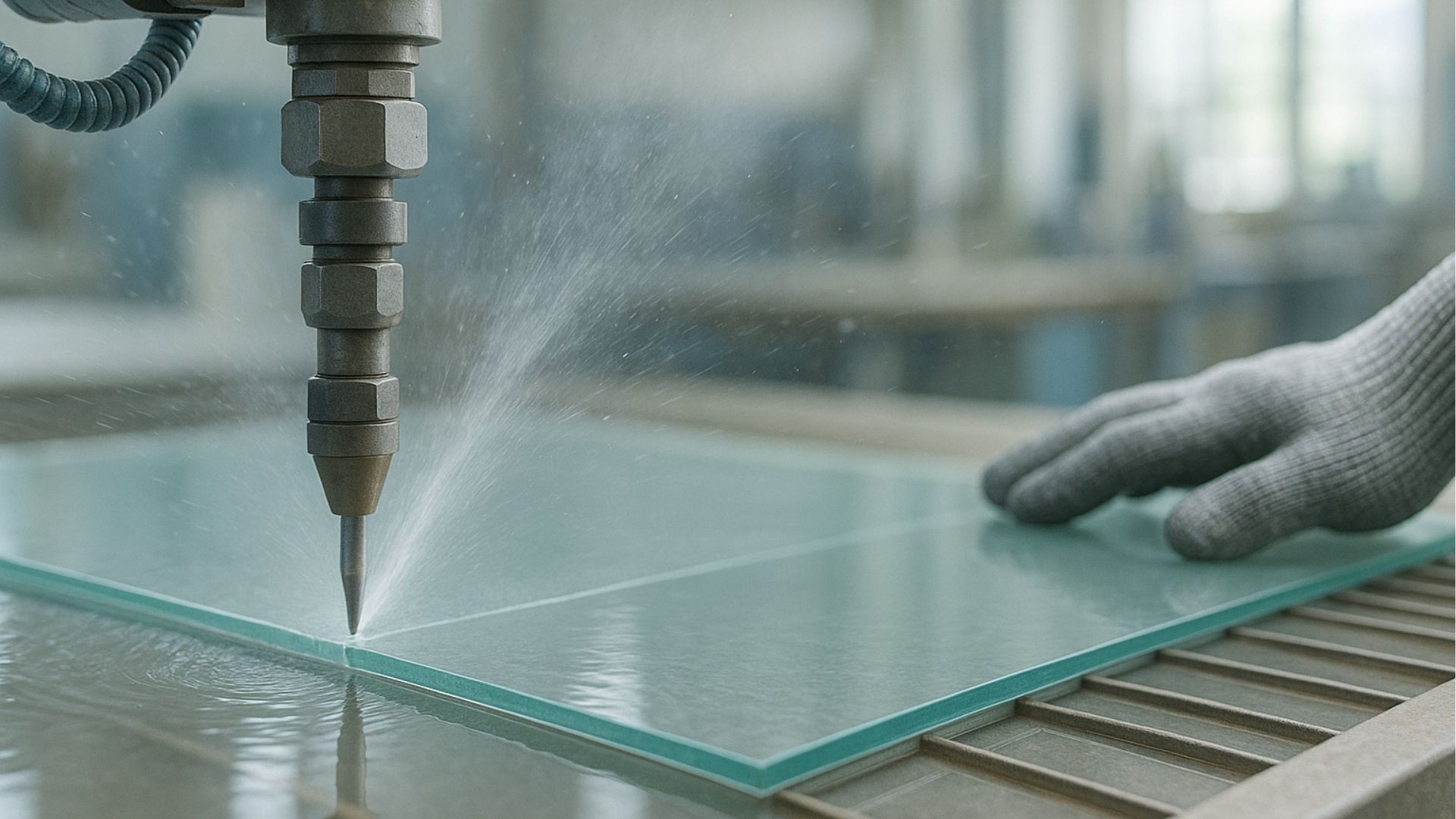Obscure glass regulations in the UK explained
Share this blog:
What are the rules and regulations surrounding obscure or privacy glass in the UK? Find out in our guide.

For as long as it's been manufactured, glass has served multiple functions.
It lets light into buildings. It keeps noise out. It keeps warmth in. And in the case of obscure glass – also known as "privacy glass" – it provides a visual barrier between inside and out.
Obscure glass is an umbrella term referring to any type of glass that obscures or distorts what you can see when you look through it.
This obscurity can be achieved in different ways. The glass can be
coloured, frosted or
sandblasted. These different methods provide different levels of obscurity measured on a scale from one to five – from a light blur to full-on opacity.
Obscure glass is often used to increase privacy, whether in a commercial or domestic property. It can also be used for aesthetic effect or to soften and diffuse light.
Yes, obscure glass is well worth exploring, whatever the setting or architectural project. Sometimes, however, there are planning permissions and building regulations to follow. In this article, we break down the relevant regulations here in the UK – and answer some frequently asked questions.
Planning permission surrounding obscure glass
In the case of domestic properties, you usually don't need planning permission for new or replacement windows – provided they match the character of the house.
However, things get a little more complicated with windows in upper-floor side elevations. This is where obscure glass comes in.
If you're installing or replacing a window in an upper-floor side elevation, it must:
- Be obscure glazed AND
- Be non-opening OR
- Be installed more than 1.7 metres above the floor level
This applies to new windows, replacement windows, windows in listed buildings and windows in buildings in conservation areas.
Building regulations regarding obscure glass
Like any other kind of glass, obscure glass is subject to building regulations.
Above all, it must comply with safety standards. In some locations, this means your obscure glass must be toughened or laminated. Examples of this include lower-level windows or windows where impact is a special concern.

Toughened glass and laminated glass are two types of safety glass. When toughened glass breaks, it breaks into relatively harmless smithereens rather than harmful shards.
Laminated glass, meanwhile, consists of two sheets of glass and a plastic interlayer. It takes a huge amount of force to break laminated glass – and when it does finally break, it cracks but doesn't shatter, maintaining its structural stability.
Obscure glass is subject to energy regulations as well as safety regulations. This means it needs to meet current standards for insulation.
If a new window overlooks a neighbour's property, you may need to use obscure glass to protect their privacy.
Planning permission and building regulations are two separate things. Even if you don't need to seek planning permission to install obscure glass, you should still follow building regulations. Failure to do so could lead to a fine.
What are the different types of obscure glass?
There are three main types of obscure glass: frosted glass,
coloured glass and
sandblasted glass.
Frosted glass consists of a sheet of glass etched with acid to create a pitted surface. The glass can be annealed, toughened or laminated.
The finished product is translucent. Looking through a frosted window, you might see shadows or fuzzy shapes, but nothing definite. However, frosted glass still lets light through, making it a functional window as well as a privacy screen.
Sandblasted glass is made by firing sand or another type of fine-grained material at a pane of glass. This can be stencilled to create grainy patterns or covered entirely. As with frosted glass, sandblasted glass can be annealed, toughened or laminated depending on where it's to be installed and any safety considerations.
Finally, there's coloured glass, which could be seen as modern-day stained glass. Coloured glass is a kind of laminated glass with a coloured interlayer. This can be
any colour under the sun.
What are the applications of obscure glass?

Obscure glass is nothing if not versatile. It can be used for privacy, decoration or both at once.
Perhaps the most common application is bathroom windows and shower doors. These provide privacy and, when toughened, safety. In commercial premises, obscure glass is used to add privacy to meeting rooms.
Another common application is for decorative glass panels on front doors. These let light in while keeping out prying eyes.
At the decorative end, obscure glass is used for office tables, glass partitions and even signage. You'll sometimes see it in high-end offices, banks and other business environments.
Other applications of obscure glass include wall partitions, mirrors, roof windows and skylights.
What's the difference between obscure glass and frosted glass?
Obscure glass is an umbrella term for any translucent glass designed to minimise visibility. So, while frosted glass is a type of obscure glass, not all obscure glass is frosted.
What's the difference between obscure glass and opaque glass?
Obscure glass exists to minimise visibility. Opaque glass, by contrast, is impossible to see through.
Can obscure glass be toughened?
Yes, obscure glass can be toughened. This is a manufacturing process that consists of heating glass to a high temperature, taking it out of the furnace and rapidly cooling it with blasts of air.
This sudden change in temperature affects the molecular composition of the glass. The result is a type of glass that's up to five times stronger than annealed glass and breaks into lots of small, harmless pieces.
Toughened obscure glass is especially useful for shower screens, combining safety and privacy in one solution.
Obscure glass can also be laminated. This makes it as hard to break as it is to see through.
Our obscure glass range
Here at ToughGlaze, we specialise in toughened glass – and we toughen obscure glass products for any application. We provide a range of clients with
coloured glass (TG CI) and
sandblasted glass (TG SB).
Get in touch to find out more or request a free, competitive quote.









